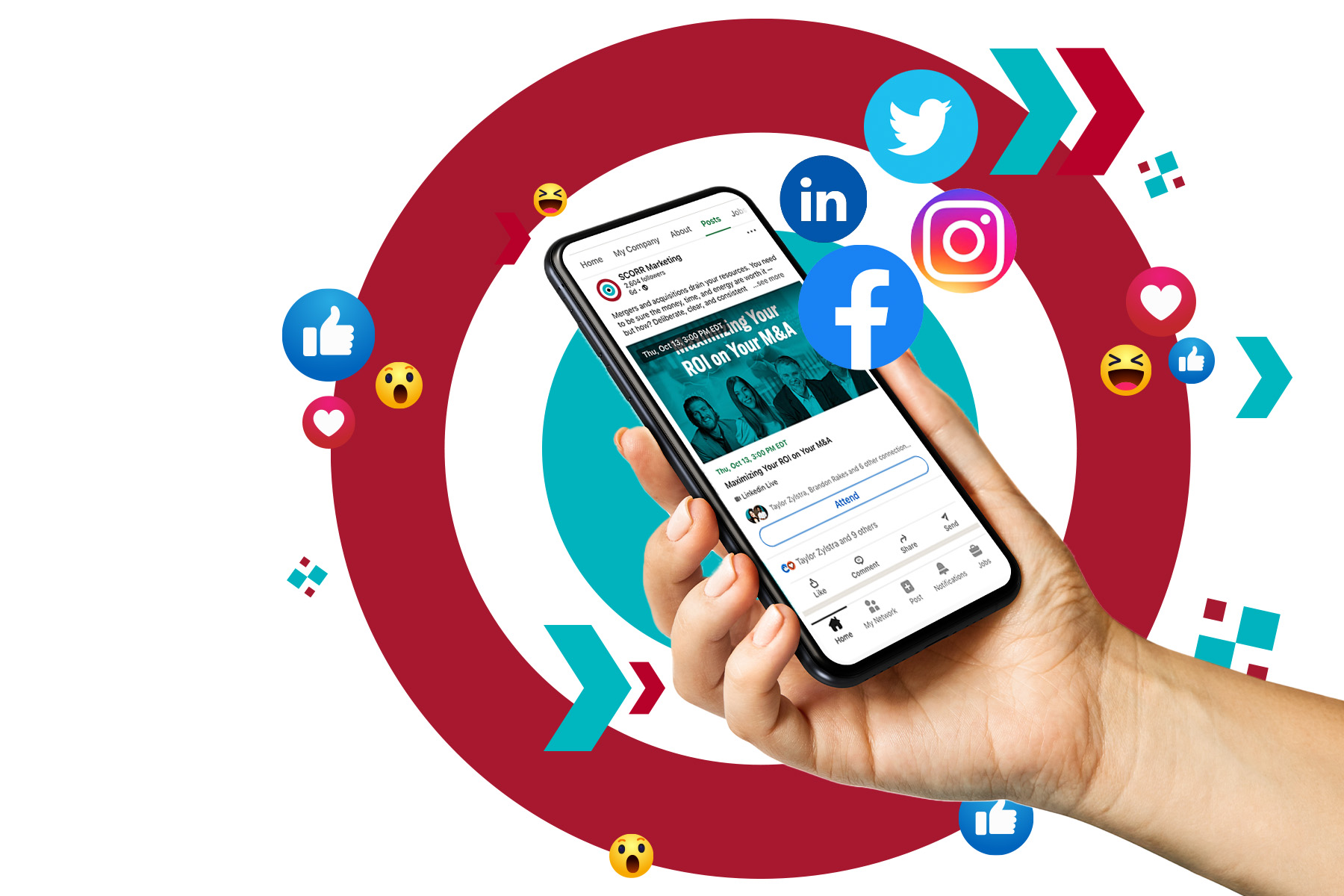B2B social media marketing is hard. It gets even harder if your company’s services or products are highly technical, complex, or come across as “boring” to the average viewer. How can you find a balance between technicality and digestibility to increase your brand visibility, reach your target audience, and grow your business?
At SCORR Marketing, we design fully integrated marketing strategies for B2B companies working in the health science space. Through our years of experience, we have identified six must-read tips for optimizing B2B social media strategies:
1. Know Your Audience
Understanding your audience lays the groundwork for digital marketing strategy across your organization, and social media is no different. Get to know your target audience by asking yourself:
- Who are our customers?
- Where are they online?
- What do they care about?
- Do they know who we are?
- What do they think of us? Is it what we want them to think?
- What do they need to see to believe that our products or services are worth their money?
Asking these questions is part of SCORR’s core process for building client strategies, so we know firsthand that taking the extra time to research and document these audience insights makes defining a social media brand that much easier.
2. Strategy Trumps Trendy
The latest social media trends and the viral attention they promise are tempting, but participating in them can confuse your followers and even hurt your brand image if they don’t align with your defined strategy.
Instead, take a thoughtful, thorough approach to your company’s social media presence, focusing on tactical adjustments with tangible desired outcomes. Think SMART.
3. Develop Consistent Brand Guidelines
Every employee should have access to a voice, tone, and brand style guide and an employee social media usage guide.
A voice, tone, and brand guide gives your team all the information they need to keep your brand consistent across all social media platforms. A clear road map of how your brand should be represented on social channels offers ultimate control over content and messaging. Plus, a voice and tone guide can also prevent your content from becoming too technical, further setting you apart from other B2B companies.
An employee social media usage guide ensures your employees have a clear understanding of what is expected should they use social media on the company’s behalf, including the consequences of breaking the policies. These guides encourage and empower your employees to share and interact with company content in ways that are in line with your brand and goals.
4. Optimize Varying Content for Each Platform
To find success across multiple platforms, you must play by the rules of each. Make sure you’re sizing your graphics and writing copy that fits within the best practices of each different platform. And, instead of copying and pasting the same content on all social channels, vary your content from platform to platform so you can not only meet the requirements of each but also signal to your followers that you prioritize quality content, as it’s likely your Facebook followers also follow you on LinkedIn, etc.
Another way to vary your content is to include sharing content created by others, what people in the business call “curated content.” This might seem counterintuitive as the likely goal of your social media strategy is to generate leads. However, more and more social media users want their feeds to be less sales and more social like they were in the good old days of Myspace and classic Facebook. Approaching your content as social instead of pure sales makes it a high funnel awareness device rather than a conversion tool. Easily vary your content by following the rule of thirds: posting equal parts promotional content, curated content, and business updates that support your mission more than your services or products.
5. Engage Consistently, Always, and Forever!
You can have your audience nailed, your goals in place, your organization onboard with your voice and tone, and a tailored plan for each platform, but it won’t matter unless you consistently post on and engage with your social media channels. Consistent use of your social channels will not only keep your followers engaged but will also earn you a “gold star” in the eyes of the algorithm, therefore increasing the likelihood your content will be served to non-followers, which ultimately boosts your visibility. Ideally, you should post two to three times per week on all relevant channels.
6. Test, Test, Test, and Then Test Some More
Social media moves fast, and your audience is expecting you to evolve as the platforms do. What works for your company today might not work tomorrow. You must consistently test new content ideas, different visual mediums, and new platform features as they become available. However, a willingness to make changes is important, but you must balance any changes with measurable tactical updates to avoid losing the brand consistency that you worked so hard to attain.
7. Your Competitive Advantage in Life Science Marketing
From audience research and strategy development to implementation and testing, SCORR is your competitive advantage in health science marketing. Contact us today to learn more about our B2B social media services.

